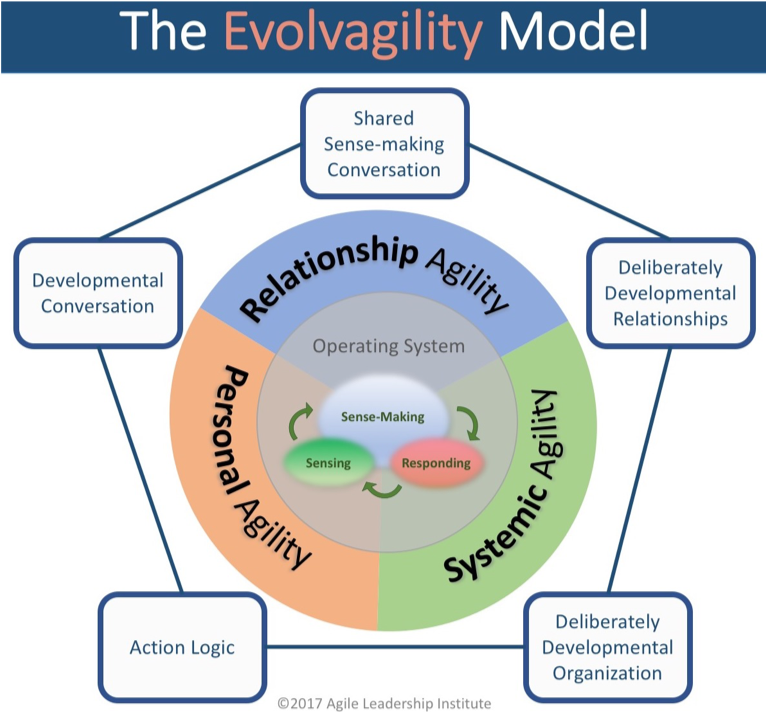How many times have you left a meeting where all present have a clear idea in mind of what to do next, and a few weeks later it turns out that there was a hidden diversity of thought, and the effort is scattered, or worse, a failure? How many times have you thought to yourself, “He has no idea what he is talking about,” or “She is not on the same page,” and yet you could not get the other person to see things your way?
In December I spent three days with Michael Hammon and Clive Prout at an extraordinary class. “Class” doesn’t feel like the right word – it was more like an experience. In my case, it was one of those experiences that affects you deeply, that you never forget, that some might call “life-changing.”
Evolvagility Leadership Model
On the surface, the class is a straightforward leadership training. Ahead of time you take a leadership assessment test, and during the class the meaning of your score is slowly unpacked, with the goal of understanding yourself more fully so that you can lead more effectively. However, once you are in the class, you realize this experience will be much deeper on a personal level. Michael and Clive do not teach steps to success nor lecture on complex information. Instead, this experience teaches you not only what leadership stance you align with, but how you can relate to the world in a richer way to bring about shared understanding. And shared understanding is elusive, rare, and essential.

Evolvagility invites us to realize the value of shared understanding and provides experiential learning to help us achieve it. The model of leadership Michael and Clive espouse is oriented towards helping those around us to collectively figure out, for themselves, what is most necessary, and then leading them there. If you stop a minute to think about it, this is a very powerful form of leadership, because you in effect help move people in the direction they already want to go. You dive into the fray, as confused as anyone about what is going on and what should happen, and you work within the system to discern the most essential thing that this system needs and wants. Once you discern this, you gently reveal the system to itself, and since it already wanted it in the first place, people are quite willing to follow your lead.
Putting the Model into Practice
Lest this sound too theoretical, let me offer a simple example. One of my software teams with a tight deadline and external constraints chose to forgo backlog refinement in the interests of time, relying instead on the team members individually to write good stories. Eventually, however, team members became uncertain not only about what other people were doing, but also about what they themselves ought to be doing. Cross-functionality suffered. An earlier version of Lisa would have said, “You are struggling because you are not refining the backlog properly.” The Evolvagility version of Lisa got the team together, encouraged individuals to articulate the challenges, and asked the team to consider how to move towards being on the same page. They themselves decided/realized that backlog refinement was needed. Before the end of the day, we had both shared understanding and a refined backlog.
Bottom Line
While Evolvagility takes the Agile values and principles to heart, it eschews discussion of specific practices in favor of enabling participants to fully experience the power of the leadership model Michael and Clive teach. Agile as a management theory, as a way of thinking, is fundamentally about people, and how they interact with one another to bring about miraculous works of a dizzying array of usefulness to society and the world. People are hopelessly complex; leading them effectively takes all that we have to give and then some. Evolvagility helps widen our perceptions and learn how to bring about shared understanding so that we can move in the right direction with confidence, knowing others will follow.